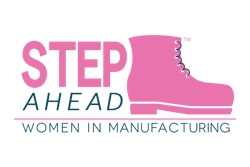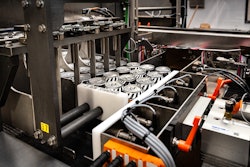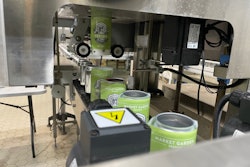Take a walk out to your shop floor and tell me what you see.
For starters you probably see engineering, fabrication, and assembly cells, and some rather high-tech machinery used to support each of those functions. You also see employees working in those cells, using their skills and years of experience to get the job done professionally and on time.
Notice anything else about your workforce? Some of them may be graying and soon preparing to retire. The age of your workforce represents a good opportunity for qualified younger employees to step in and launch their career. The problem you face is finding that young person.
All around the country there are manufacturing jobs that employers are looking to fill. Sadly, there aren’t enough skilled workers to fill them. So just how many jobs are open? According to Businessweek.com, there are more than 600,000 U.S. manufacturing jobs that remain unfilled due to a lack of trained workers. In fact, in the United States, technicians and skilled trades represent two of the top three most difficult job categories for manufacturers to fill.
With unemployment still somewhat high in this country, why aren’t people looking at manufacturing as a viable career choice? It starts with perception. I think many people have a negative view toward manufacturing. All they see are dirty jobs, tall smoke stacks, and hot factories. While at one time that was true, those stereotypes are decades old, and anyone who’s been inside a manufacturing facility knows it’s an environment filled with cutting-edge technology that requires skill and training to work. But that’s part of the problem—people don’t know what it’s like because they’ve never been inside a plant. Those antiquated, negative perceptions are hampering the recruiting efforts of young people into the industry, and they need to be changed.
Engaging students
So how do we go about changing that perception and getting young people energized about manufacturing? I’d say let’s start engaging kids in grade school and emphasizing mathematics and science—the foundations they’ll need to pursue a career in high-tech industries such as manufacturing, packaging, engineering, etc. Organizations such as JumPPstart (www.pmmi.org) and Project Lead The Way (www.pltwy.org) are helping to pilot these efforts.
JumPPstart is an initiative between PMMI member companies in Milwaukee and Minneapolis that aims to connect with area high school students to promote careers in the packaging and processing industries. The goal is to engage students, parents, and school administrators to demonstrate career opportunities within the industry. In addition to Milwaukee and Minneapolis, a third will soon take root in Chicago.
Launched in 1997, Project Lead The Way is a non-profit organization that designs rigorous and innovative science, technology, engineering and mathematics curricular programs taught in middle and high schools across the country.
Teachers at participating schools receive extra instruction and become certified to facilitate the curriculum. Today, more than 4,700 schools in all 50 states are offering Project Lead The Way courses. And the results seem to be paying dividends as, according to its website, students completing these classes are studying engineering and technology at five to 10 times the average rate of their peers. Furthermore, on average, about 80 percent of participating high school seniors say they plan to study engineering, technology or computer sciences in college, compared to the national average of 32 percent.
PMMI’s role
This issue is front and center of the Education and Workforce Development Committee at PMMI as well. Our mission is to ensure the strength and growth of the packaging and supply chain workforce. Srategies the committee is implementing to accomplish this include demonstrating all the career options available within the packaging industry; giving people a way to learn the skills that packaging companies are looking for; and providing programs that can serve membership and their employment challenges.
Just as programs like Project Lead The Way target students through high school, we’ve tailored our outreach efforts to include partnerships with both technical schools and traditional four-year colleges. One area of study that’s gaining traction with college students looking at a career in manufacturing or packaging is mechatronics engineering. Although it’s a relatively new concept, mechatronics is a result of the changing landscape that engineers are facing in the workforce.
Mechatronics focuses on the design and production of automated equipment and combines mechanical, electrical, systems design, computer, and control engineering—elements that nearly all packaging equipment contain. The advantage of studying this career field is that students gain hands-on experience with engineering disciplines such as pneumatics, hydraulics, electricity, and the design and manufacturing process of mechanical parts. Students studying mechatronics can test and receive a PMMI certification in several disciplines within the field, including pneumatics, electricity, fluid, power, etc.
Beyond the classroom, we give students enrolled in a PMMI-related course hands-on exposure to the industry by inviting them to Pack Expo. There, they participate in events like The Amazing Packaging Race and PACK Solutions Challenge—both of which test their engineering knowledge while serving as a great networking opportunity.
Another program we coordinate is called How it’s Packaged, a summer tour in which a group of college students tour several PMMI-member companies in the Midwest and see the process from the inside out. I like to say we show kids how the Cheerios get inside the box—which is something they never even thought about. Since almost none of these kids have even been inside a packaging plant before, knowledge like this give them exposure in the real world of packaging.
There are many career opportunities with great chances for advancement just waiting to be filled within the packaging and manufacturing industries. But people need to have the right skills and qualifications to get them. That’s why finding skilled labor is a major concern with PMMI members. The solution isn’t going to present itself overnight. We need to continue breaking down negative stereotypes about the industry and get young people excited about the possibilities. Organizations like Project Lead The Way are proving to be a great resource in getting kids interested in sciences and technology, and the partnerships PMMI has with post secondary schools will soon begin closing the skills gap. Now is the time to be involved in packaging and manufacturing—we just have to package it the right way and get the word out.
Timm Johnson is Vice President Sales/Marketing at Spee-Dee Packaging Machinery Inc. and serves as Chairman of the Education and Workforce Development Committee at PMMI.
Workforce development book due out in April
Due out in Q2 from Packaging World and Summit Media Group is a book titled Manufacturing Workforce Development that dovetails nicely with today’s exciting renaissance in U.S. manufacturing. Available in Q2, this book will be edited by renowned workforce development consultant Keith Campbell, and it will provide proven strategies for dealing with the skills gap crisis facing manufacturers today. It will incorporate insights from all who have a stake in workforce development, and it will present strategies and actions that have been successfully employed by industry, education, and government to collaboratively solve the short- and long-term problems of preparing workers for the future. If your company is interested in sponsorship, you can review the opportunities at (pwgo.to/443). A percentage of net proceeds will go toward future funding of the David A. Harvey Scholarship.
PepsiCo backs IoPP educational programs
Elsewhere in the world of packaging training and education, IoPP just announced that PepsiCo is the Institute’s first Platinum Benefactor.
PepsiCo’s Platinum Benefactor contribution signifies their commitment to IoPP by helping to strengthen the Institute’s core mission of educating packaging professionals. Through their support of IoPP, PepsiCo’s packaging teams will have unprecedented access to IoPP’s educational programs, including IoPP’s online packaging courses such as Fundamentals of Packaging Technology.
“With net revenues of more than $65 billion and a product portfolio that includes 22 brands generating more than $1 billion each in annual retail sales, packaging continues to be integral to PepsiCo’s success as a global food and beverage leader,” says Toby Wingfield, R&D Packaging director, PepsiCo. “That’s why our commitment as the Institute’s first Platinum Benefactor is an honor, particularly in the way of expanding online packaging education. For PepsiCo, this means ongoing opportunities for our colleagues worldwide.”
As part of PepsiCo’s overall educational mission, IoPP will award a $5,000 “PepsiCo R&D Scholarship” to a top packaging student applicant each year.
“With PepsiCo coming on board as a Platinum Benefactor, IoPP’s industry reach widens, with education at the forefront,” said Patrick Farrey, IoPP Executive Director. “We view this as a commitment to the packaging industry as a whole, with both organizations focused on continuous and innovative program development providing more opportunities focused on success and innovation for students and packaging professionals across all industries.”
For more information, visit www.iopp.org or www.pmmi.org.

























